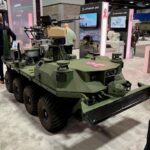
The White House on Tuesday released an updated list of key technology categories that are potentially significant to national security and updates the original list to include subfields of core technologies. The Critical and Emerging Technologies (CET) list contains 19 advanced technologies and a larger number of subfields that will inform a forthcoming strategy on “U.S. technological competitiveness and national security,” the 11-page document says. The CET’s include advanced computing, advanced engineering materials, advanced gas turbine engine technologies, advanced manufacturing,…

 By
By 











